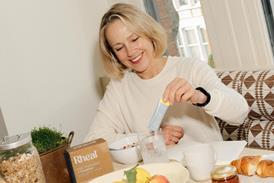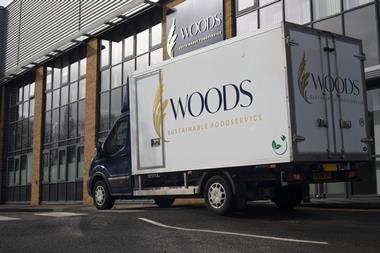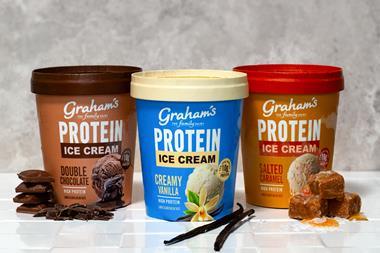Assessing the performance of the confectionery market has a certain air of predictability about it. In a country where the per capita consumption of sweets is the highest in the world (we each consumed an average of 11kg of chocolate and 5kg of sugar confectionery in 1998), it would be unthinkable for this market to put in anything other than growth figures.
But pinning it down to precise size and performance data is another matter, partly because of the challenges of measuring the huge impulse element, and partly because manufacturers like to present the market in the most positive light.
Taylor Nelson Sofres Impulse conservatively estimates the total market value at £4.2bn (to the end of June 1999), with sales of total chocolate, which accounts for three quarters of the market, falling back slightly, and sugar confectionery putting on a spurt. It reckons to measure about 85% of the market.
Of the big three players, Mars and Nestlé Rowntree estimate the market at £5.2bn and £5.4bn, with 7% and 5.2% value growth respectively at the end of last year.
Cadbury, on the other hand, puts it at £5.5bn for 1998 and sees volume growth continuing at the 1% per annum pace it's maintained over the last 10 years.
In contrast, there is unanimity about the underlying trends driving the market, the biggest in the whole of grocery. They all hinge on changing consumer lifestyles
l Consumers are living busier, faster lives so are going for more convenience products.
l Snacking and out of home eating is growing
l Formal meal times are declining
l Consumers on the move are going for meal substitutes.
All these different need states' are finding a ready solution in confectionery in its various forms.
Looking at market share, the big three brand players have approximately a quarter each.
Cadbury (with Trebor Bassett) claims 31%, with Mars 23.2% and Nestlé Rowntree 24% [Cadbury estimates to end July 1999].
They are gaining share at the expense of smaller players and foreign producers, largely due to the sheer force of brand power, marketing muscle and fresh innovation.
Own label's share doesn't get a look in, unlike other grocery markets, though the multiples' share of sales is rising.
The market's extreme maturity, conservatism and brand loyalty is nowhere more evident than in the bestseller lists which for years have been peppered with the same brand names.
Nevertheless, manufacturers stress the importance of innovation in growing the market, and have kept up a spate of new product development.
Mars Confectionery trade relations manager Philippa Leon says category management has had a profound effect on how the company develops new products.
"It has given us insight into the reasons why consumers buy confectionery and has enabled us to create products, pack sizes and variants for specific purposes and groups of people. Celebrations, with its modern image, has brought a younger audience into boxed chocolates, formerly a static area, and has grown the everyday sharing and gifting market.
"Flyte has driven growth in the lower fat sector which appeals to women. Future growth will come from matching products to consumers' changing lifestyles which will bring in new customers."
Leon highlights the grey' market people over 45 as one area where few targeted products currently exist and which could have opportunities for development. On the hoof' snacks is another.
"Sugar confectionery, which is underdeveloped with lots of small brands, also has huge opportunities," adds Leon.
"We launched Juicy Gums this year and are looking to push awareness of sugar products."
After its efforts last year launching Celebrations, Mars has had a relatively quiet 1999 in development terms, passing the mantle of innovation to its big competitors.
Cadbury has taken it up with a vengeance, launching two of 1999's biggest developments, Yowie in the children's sector, and Miniature Heroes its answer to Celebrations. Craze and Marble are two more significant developments.
Trade channel manager Veronica Winn says 20% of sales are driven by new product development, highlighting just how important this activity is to the market.
Nestlé Rowntree's forte lies in mining the possibilities of its big brands with extensions and limited editions. Its biggest development this year is KitKat Chunky, launched in April to provide a more substantial eat' for teenagers and young adults. Trade communications manager James Porteous says demand continues to outstrip supply, despite the introduction of another production line. Porteous says more extensions are in the pipeline: "We've not yet explored all the possibilities."
And what of other areas of the market? With its strong growth prospects, sugar confectionery is likely to see more rationalisation, following Trebor Bassett's lead, and an increase in innovation and marketing activity to create the clearly differentiated brands that many in the industry feel the sector lacks.
The sector has already seen a lot of rationalisation, however. Swizzels Matlow says manufacturing has already shifted from small to large producers through acquisitions over the last 20 years.
It has concentrated on developing the children's sector, where it claims brand leadership in lollipops and chew bars, and is continuing to invest heavily in new product development and brand support.
The strength of sterling has helped to turn gums and jellies, much of which are imported, into one of the most vibrant sectors.
This has been driven by the multiples, which now account for 56% [ACNielsen] of sales which are growing at 15% per annum, according to Haribo md Helmut Mager. The company claims to have revitalised this formerly static sector with its bagged novelty gum and jelly lines, which includes Starmix, now a £14m brand. Six new lines have been added this year.
Consumers' growing concerns over health have had knock on effects on confectionery, benefitting medicated sweets which has shot up 14.1% [TNS Impulse to end June] and the relatively new sugar free area. Sweet N Low claims this sector, now worth £204m, has grown 580% in the last eight years and is on course to repeat its US success where it is one of the country's fastest growing segements.
Similarly, Leaf UK claims its LO Max bar is the only reduced fat chocolate brand growing year on year, and has a 5.5% share of the reduced fat chocolate sector [AC Nielsen].
{{FOCUS SPECIALS }}
Close menu
- Home
- Retail & Wholesale
-
Products & Suppliers
- Back to parent navigation item
- Products & Suppliers
-
Product Categories:
- Back to parent navigation item
- Product Categories:
- Alcoholic drinks
- Bakery
- Cereals & breakfast
- Cheese
- Chicken & poultry
- Chocolate
- Confectionery
- Crisps, nuts & snacks
- Dairy
- Fish
- Fresh produce
- Frozen
- Household
- Meat
- Own Label
- Sauces & condiments
- Seasonal
- Soft drinks
- Vaping
- Vegan & plant-based
- World foods
- Suppliers
- People
- Reports & Data
-
Topics A-Z
- Back to parent navigation item
- Topics A-Z
-
Popular topics:
- Back to parent navigation item
- Popular topics:
- Cost of living crisis
- Crime
- Deposit Return Schemes
- Finance
- Government & Regulation
- Health
- Inflation
- Loyalty
- Marketing
- Mergers & Acquisitions
- New Product Development
- Sourcing
- Supply chain
- Sustainability & environment
- Technology
- Ultra Processed Foods
- Vaping
- A-Z all topics
- Content by type:
- Events
- Ask iA (beta)
- Subscribe now
Sign in to comment on this article
Not logged in before? Register for FREE guest access today.
You will be able to:
- Read more stories
- Receive daily newsletters
- Comment on stories
Advert














No comments yet